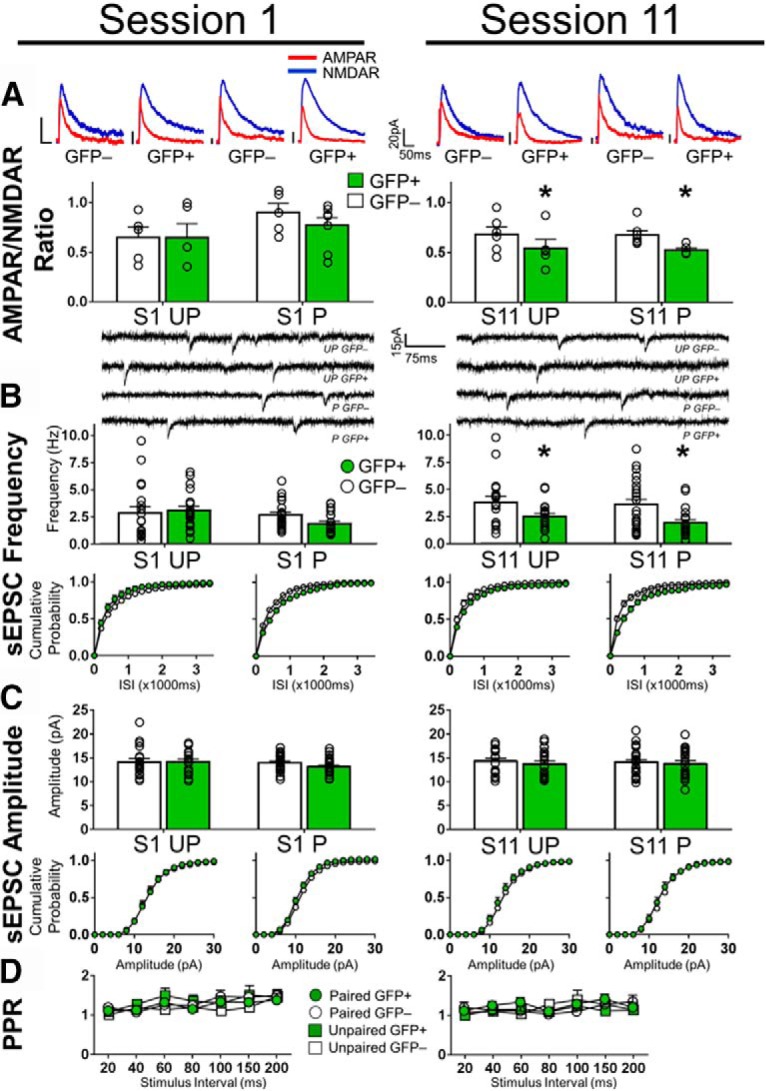Figure 6.

Conditioning-selective synaptic alterations are not observed in neurons activated on S1 and S11. A, No differences in AMPAR/NMDAR ratios between GFP+ and GFP− neurons in S1 in Paired and Unpaired mice (Paired: GFP+ n = 6/8, GFP− n = 4/5 Unpaired: GFP+ n = 4/5, GFP− n = 5/5). Decreased AMPAR/NMDAR ratios in GFP+ neurons in S11 in Paired and Unpaired mice (Paired: GFP+ n = 5/5, GFP− n = 6/7); Unpaired: GFP+ n = 4/5, GFP− n = 6/6). Top, Representative traces of AMPA/NMDAR recordings from layers II/III dmPFC pyramidal cells. Calibration: 20 pA, 50 ms. B, No differences in the frequency of sEPSCs between GFP+ and GFP− neurons in S1 in Paired and Unpaired mice. Decreased sEPSC frequency in GFP+ neurons in S11 in Paired and Unpaired mice. Top, Representative images of sEPSC recordings at −65 mV. Calibration: 15 pA, 75 ms. Bottom, Cumulative probability plots of sEPSC frequency. C, No differences in sEPSC amplitudes between GFP+ and GFP− neurons in S1 and S11. Bottom, Cumulative probability plots of sEPSC amplitudes (S1: Paired: GFP+ n = 8/19, GFP− n = 8/21; Unpaired: GFP+ n = 8/18, GFP− n = 8/19, Session 11: Paired: GFP+ n = 8/20, GFP− n = 8/24; Unpaired: GFP+ n = 7/19, GFP− n = 7/17). D, No differences in PPRs of GFP+ and GFP− neurons in S1 and S11 (Paired: GFP+ n = 7/8, GFP− n = 7/9; Unpaired: GFP+ n = 4/6, GFP− n = 5/7, S11: Paired: GFP+ n = 8/9, GFP− n = 7/7; Unpaired: GFP+ n = 7/7, GFP− n = 6/6). Data are mean ± SEM. n = number of animals/number of cells total. *Main effect of Cell Type in a two-way ANOVA p < 0.05.
